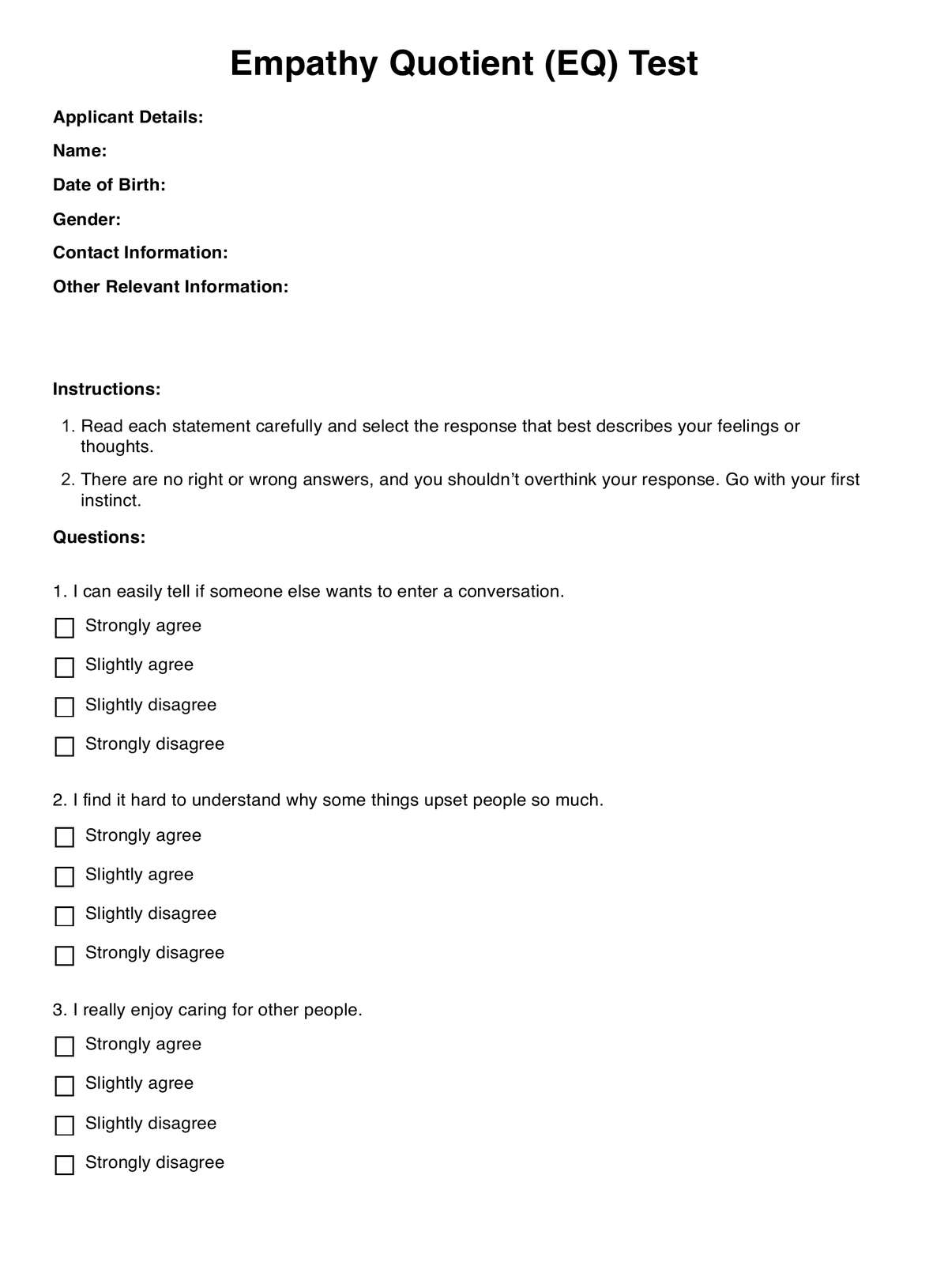The Empathy Quotient typically requires approximately 20–30 minutes to complete. The duration may vary slightly depending on the individual's pace and understanding of the questions.

Empathy Quotient
Explore the Empathy Quotient, a vital tool for assessing an individual's ability to understand and connect with others. Learn more about its applications.
Empathy Quotient Template
Commonly asked questions
The Empathy Quotient scores should be interpreted by a trained professional or by following the specific guidelines provided with the test. The scores help understand an individual's ability to empathize with others and provide valuable insights for personal development or therapeutic interventions.
The Empathy Quotient is utilized across various contexts, including personal development to enhance interpersonal relationships, professional assessments by healthcare providers to gauge empathy levels, and research settings to study emotional intelligence and social interactions.
EHR and practice management software
Get started for free
*No credit card required
Free
$0/usd
Unlimited clients
Telehealth
1GB of storage
Client portal text
Automated billing and online payments











